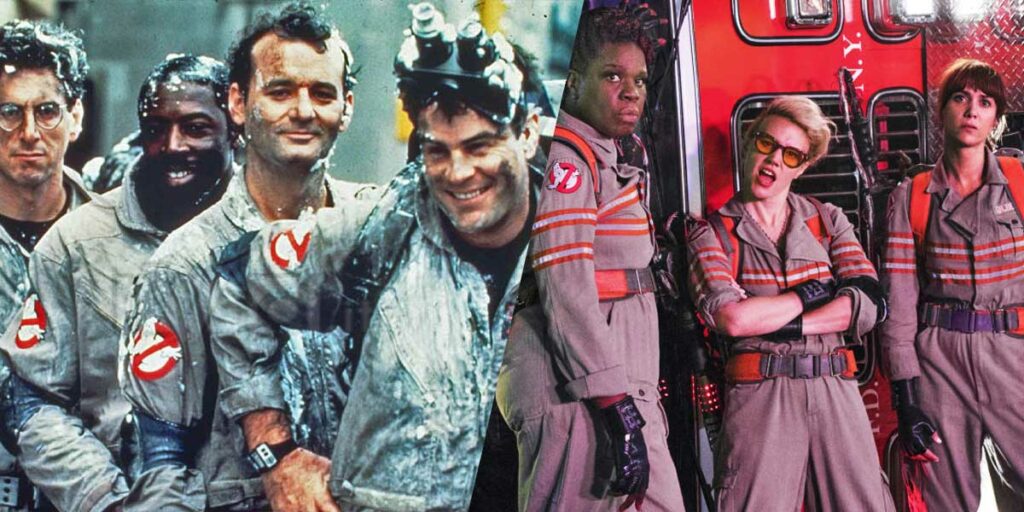While many view Ghostbusters (1984) as a masterpiece that its 2016 reboot fails to live up to, I consider them both mixed bags and even enjoy the reboot more.
Ghostbusters: an undisputed classic in the eyes of an overwhelming majority of people, ever since it hit theaters in 1984. As many already know, the supernatural comedy directed by Ivan Reitman features four men –Venkman (Bill Murray), Egon (Harold Ramis), Ray (Dan Aykroyd), and Winston (Ernie Hudson) – who start up a ghost-hunting business and save the world from an invading god of destruction known as Gozer (Slavitza Jovan). The film was a critical and financial success, spawned a huge multi-media franchise, and has lived on in the hearts of many as a cinematic treasure to this day. Which inevitably meant that fans were not pleased when a reboot, directed by Paul Feig, was released in the summer of 2016. This new installment follows a similar plot to the 1984 original, but casts all women (Kristen Wiig, Melissa McCarthy, Kate McKinnon, Leslie Jones) in the four lead roles, has them go up against a mad scientist named Rowan (Neil Casey), and takes the tone in a more family-friendly direction. Though the 2016 reboot was generally liked by critics, fans primarily have regarded it as a watered-down, mediocre, and thoroughly inferior film when compared to the original.
The release of the reboot, as well as the discussion around it, got me to finally check out the 1984 film for the first time in 2016. Much to my shock, however, while I didn’t hate the film by any means, I found myself very underwhelmed by it. Even after watching it a second time a few years later out of sheer desperation to like it, I had to sadly accept that the original Ghostbusters simply wasn’t for me. But then, after first watching the original, I saw the 2016 reboot, and I ended up having a decently fun time.
While this reboot definitely has its own share of problems and elements that the original does better, pretty much every flaw I have with the 1984 film is fixed in the 2016 reboot in my eyes. Which means that I find myself having about as rare and unpopular an opinion as you can come across regarding cinema: I like the 2016 Ghostbusters reboot better than the 1984 classic. And, because I find it fascinating and refreshing whenever a point of view towards art veers so heavily against the majority consensus, I thought it would be interesting to go through these two Ghostbusters film and compare them. I’ll keep everything spoiler-free just to be on the safe side.
THE FLATNESS OF THE 1984 CAST
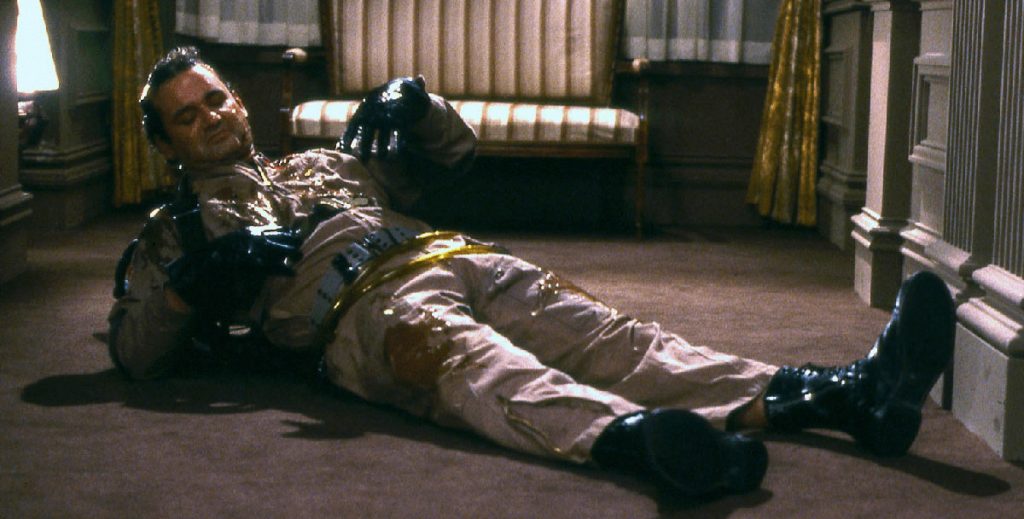
Arguably the most important part of Ghostbusters is … well, the Ghostbusters. In the 1984 film, Bill Murray plays our main character Peter Venkman, a professor at Columbia University. He’s meant to be witty, dryly sarcastic, the straight man in a relatively zany group, and the cynical underdog we root for to save the day and get the girl at the end. I, however, find him unlikeable and impossible to connect with, due to his shallowness and seeming lack of investment in everything around him. Venkman rarely has a proper reaction to anything that happens in Ghostbusters, and he comes across as very bland as a result. Upon seeing the first ghost of the film, he just blankly looks on and doesn’t seem at all surprised or excited (has he even seen a ghost before?). He hardly appears upset when he loses his job. He barely flinches and seems totally unconcerned when his supposed romantic interest Dana (Sigourney Weaver) is possessed by Zuul, a minion of Gozer.
I get that Venkman is supposed to be a reserved, deadpan snarker, but Ghostbusters takes that to a point where I feel no authentic investment from him underneath that deadpan exterior. He has moments of energy, but they’re too few and are not present when they’re most needed. On the subject of Dana, I hate the “romance” between her and Venkman. The two of them have no chemistry, no reason to like each other, and at no point does Venkman seem to care about her for any reason other than that she’s hot. It’s an obligatory movie romance and nothing more.
As for the other Ghostbusters, the only one I find memorable is Ray, simply because of Aykroyd’s likeable delivery and the character’s innocent and expressive demeanor. Egon is generally pretty forgettable and has no interesting traits outside of being awkward and good with gadgets. Winston just shows up out of nowhere far too late into the film, with no stated qualifications, few characteristics, and no point in being in the story at all. The only other performance in the 1984 film that stands out is Sigourney Weaver. She completely sells every single bit of what little she has to work with, particularly when confronted with the ghosts haunting her, and she makes Dana far more memorable than the script allows for.
THE EMOTIONAL STRENGTH OF THE 2016 CAST
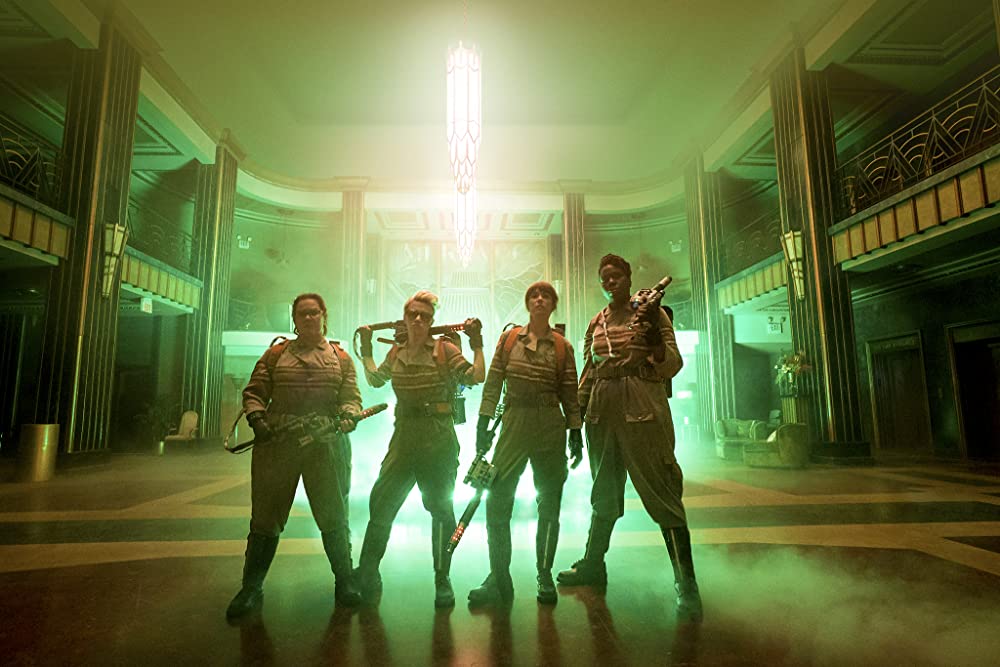
By contrast, the 2016 Ghostbusters has a very memorable, very lovable, and even heartfelt cast of characters. Kristen Wiig plays Erin Gilbert, a particle physicist who has disowned her previous paranormal investigations to further her career as a college professor. This has estranged her from her former best friend Abby Yates (McCarthy), who remains steadfast in her beliefs in the paranormal. Erin is an awkward, insecure, slightly squeamish individual, and it’s sad to see her down on her luck because … well, she acts like it actually bothers her. She even lets her insecurities and past humiliations get the best of her, causing problems for the rest of the team through her reckless actions.
This plays very well off of Abby’s more upbeat, optimistic personality. Abby’s efforts to raise her friend’s spirits and unwavering faith in their cause, and Erin’s excitement in finally knowing for sure that ghosts really exist, make these two instantly identifiable as a duo and as individuals. Though they’re quite different and have a complicated relationship, it becomes clear as the film goes on that they nonetheless share a close bond that’s put back together thanks in part to the formation of the Ghostbusters. I know that Erin and Venkman are meant to be very different, but that doesn’t change how much easier it is to connect with Erin.
Accompanying Erin and Abby in their ghostbusting are Jillian “Holtz” Holtzmann (McKinnon) and Patricia “Patty” Tolan (Jones). Holtz is a distinctive oddball that could have so easily come across as desperate and annoying, but McKinnon injects a lot of charisma into the role, with just the right amount of restraint to make the character memorable but not overbearing. But my favorite character in the reboot is the fourth Ghostbuster, Patty. Unlike Winston in the original film, Patty has a solid reason for joining the team as the outsider, as she has extensive knowledge of New York’s locations and history that works greatly to the team’s benefit. She’s properly introduced, forms an actual connection with the rest of the team, shows clear and infectious enthusiasm for what they do, and even proves to be the most level-headed member, which is especially surprising for a Leslie Jones role. All in all, the characters are by far what the reboot improves on the most over the original, and it’s a shame that we’ll never get to see these women together again in another adventure.
THE FORMATION OF THE TEAM
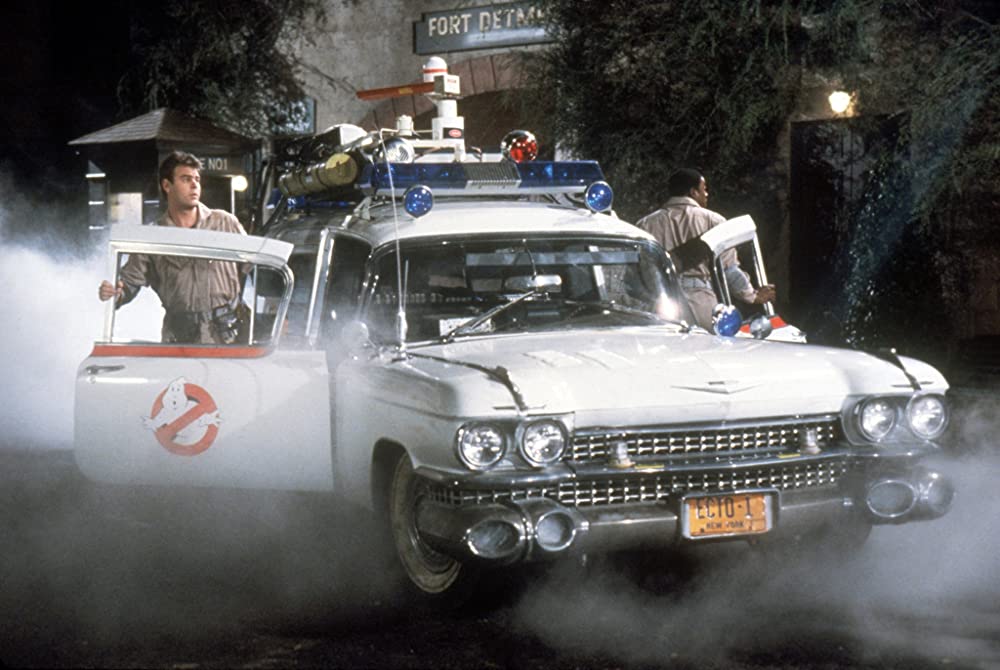
The 2016 reboot’s story is also an overall improvement over the original’s story, though not by as wide a margin as with the characters. In the 1984 Ghostbusters, the setup, progression, and details of the story are competent, but often very underwhelming, sometimes feeling like they’re missing crucial components. For instance, the formation of the Ghostbusters as a successful company is a little too fast, specifically when it comes their weapons and gear. I often appreciate being able to see the origins and details of how heroic characters get themselves ready for the endeavors they’ll face. It helps build up the adventure to come, and it’s a good way of getting to know the characters further. In Ghostbusters, however, we see very little of that. The team already has most of their equipment and resources ready to go, and the progression of them gaining notoriety and the booming of their business is too rushed to leave any sort of impression.
The impact the Ghostbusters have on their city really isn’t gotten across effectively, as the city itself is barely fleshed out or defined. Imagine if Sam Raimi’s Spider-Man didn’t include the multiple instances of Spider-Man saving people, stopping crime, and interacting with the citizens of New York. That’s the kind of thing Ghostbusters is lacking. The most we see before the climax is the catching of Slimer, which causes a lot of destruction, the comedy of which isn’t even exploited that much. We’re told that the team is making a difference, but we’re rarely shown it. Every stretch of the story is just going through the beats and little else.
This is, again, where the 2016 Ghostbusters picks up the slack. Many have complained that the pacing is considerably dragged down because it takes so much more time to get the team going, but I see this decision as a positive. It fleshes out the elements that an origin story is supposed to flesh out. I’ll admit that we don’t need to see how every aspect of their business is formed – I wasn’t going to lose sleep if I didn’t know the origin of the logo – but added scenes like Abby testing out the proton pack, Holtz introducing the new gadgets, and the acquisition and customization of the Ecto-1 are still welcomed additions. Because we get a better look at how these four characters find their success, it’s much easier to feel the payoff when the big final threat comes along and they’re put to their greatest test. Every challenge they overcome feels more triumphant, and every setback they suffer is a harder hit because we see more of how much they’ve worked to get where they are.
THE THREATS THE TEAM FACES
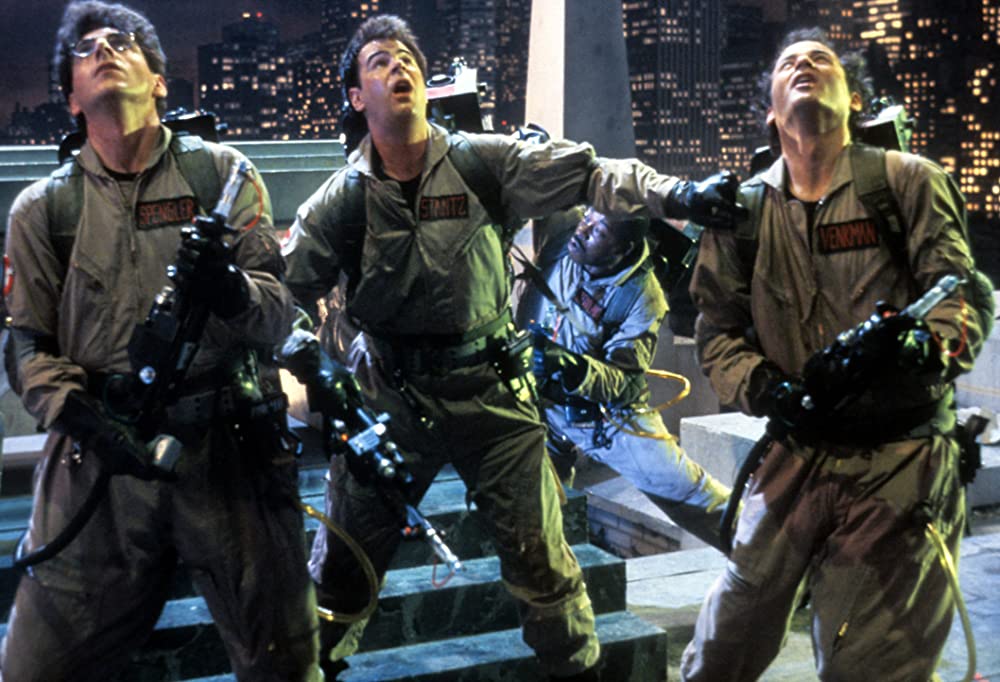
That’s not to say that the reboot’s story outdoes the original’s in every way. While the 1984 Ghostbusters is lacking in emotional resonance, the threats are definitely more menacing. Several scenes in the original genuinely get under my skin for how unsettling and even scary they are. The standout example is Dana being captured by those hands on her couch, with the effects combining with Weaver’s terrified performance to give us a sequence straight out of a horror film. Because of how much dirtier and edgier the 1984 film is compared to the 2016 version, the creep factor of the ghosts, both in their buildup and their designs, can stand out more.
For all my mentioned issues with the original film’s pacing, the escalation of the strange supernatural occurrences getting crazier is done equally well in both versions. But the original is more impressive because it needs to do that while maintaining a finer balance between silliness and scares. When the ghost containment system is shut off and ghosts start running amok, it’s really gotten across that the city is descending into a very quirky kind of hell, and it’s the only time I feel a connection with the city as a whole. To be fair, I’m still invested when danger strikes in the reboot, but I’m never intimidated. I have more concern for the characters I care about than I have fear for what they’re up against. The reboot is much lighter than the original, which lowers the sense of stakes. Though I still like the story of the reboot better, I acknowledge that something was lost in abandoning the more adult tone of the original.
When it comes to the main villain, I consider the original and reboot to be equally weak. Gozer in the 1984 film has a great design and the weight of centuries-long lore that makes her far more fun to watch, but she has almost nothing in terms of substance or character. Rowan in the reboot isn’t very deep either and has no screen presence whatsoever, but he at least has more personality as a deranged scientist who feels entitled to be a god, and there are surprisingly enough layers to his plan to make for a decent mystery to unravel. Both villains fit their films well and serve their roles fine, but neither are anything special.
THE DIFFERENT APPROACHES TO COMEDY
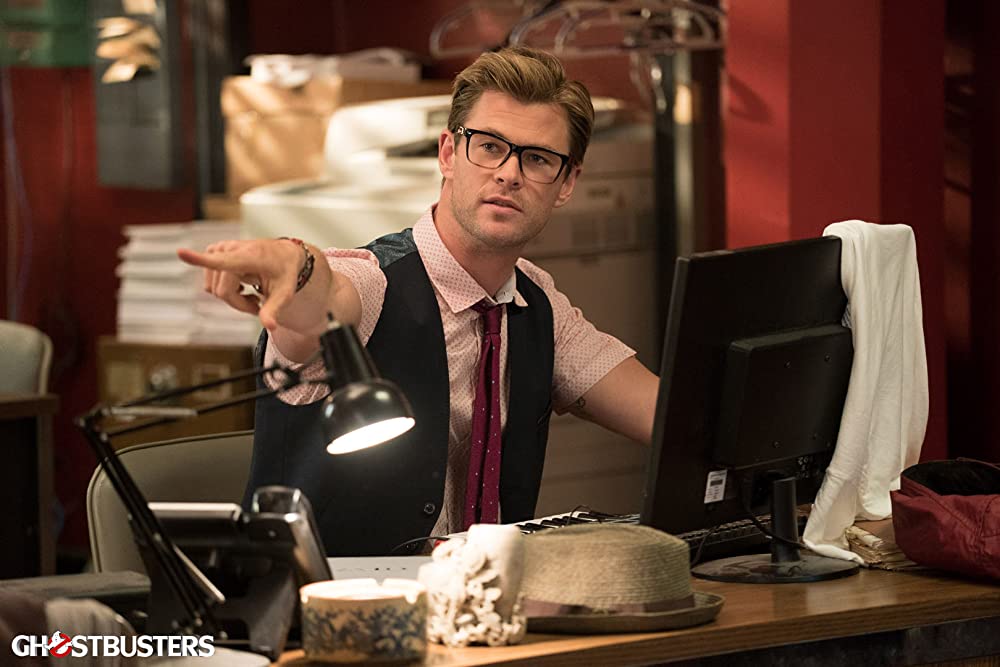
The biggest surprise to me when watching the original Ghostbusters was how little I ended up laughing. I respect the kind of dry humor that the film is going for, but when juxtaposed against the more eccentric nature of the story, that dryness becomes considerably more awkward and far too low-energy. The underwhelming performances play a big part as well, blurring the line between understated and just plain dispassionate. Clever moments and lines are also few and far between, and even when the film goes for wackier humor, the execution is very flat, shot and performed with too little punch to get a laugh. The worst offender is when Slimer is charging at Venkman, prompting Venkman to let out one of the most poorly done, unconvincing screams I’ve ever heard. Under the stiff direction Reitman is bringing to the movie, a moment like this really falls apart, which is something that happens at multiple points in the film. No matter what type of joke Ghostbusters goes for, it usually goes in one ear and out the other, with only a few exceptions.
While the 2016 film is definitely not a laugh riot either, the jokes land more often. I would have liked to see the reboot try the more low-key attempts of the original with better results, but as far as this lighter and fluffier approach goes, the Ghostbusters reboot feels more comfortable and confident in its material. And it doesn’t solely rely on mindless slapstick or immature humor; I love the joke where the women order Chinese food from a restaurant that always gets it to them late, even when they’re ordering it for delivery to the same building! Or how Kevin takes the lenses out of his glasses so he doesn’t have to clean them! The humor is also largely character-driven, which is a staple of director Paul Fieg and shines just as well here as it does in his other comedies. Even when he goes for a joke that’s a bit staler, the delivery from the actors is often strong enough to get a chuckle. But the downside to the reboot is that when the jokes fall flat, they really fall flat. Kevin mistaking his eyes for his ears is too stupid even for him, “It came out the front” is gross, and the many cameos from the original film’s actors are a bit lame, albeit harmless. The reboot’s jokes have stronger hits but worse misses than in the 1984 version, but the film overall comes out as funnier thanks to its more assured approach.
THE VISUAL EFFECTS AND ACTION SEQUENCES

While Ghostbusters 1984 has much better visual effects, Ghostbusters 2016 has much better action sequences. And yet neither film is perfect in either department. The original film’s effects are often mind-blowing for the time, and many of them still hold up perfectly today. True, the demon dogs look atrocious when they’re running, and you can sometimes see through Stay Puft in the climax, but most of these effects are still really impressive, especially for the pre-CGI age of film. The ghosts are also designed perfectly to fit with the film’s goofy yet creepy environment. The designs of the ghosts in the reboot match their respective film as well – being brighter and more bombastic – but the CGI on them really sticks out at times. This is admittedly alluded to humorously when skeptics in the film don’t believe the footage of ghosts they’re shown is real, but you could argue that to simply be an excuse to not have the effects be as good. I can see the original Ghostbusters pushing the limits of what was possible at the time, but not so much with the reboot.
But the 2016 film’s lesser effects are at least taken advantage of in the form of some pretty fun action. The new gadgets at the team’s disposal allow for a variety of creative setups and flashy fights, giving the reboot a bit of its own identity almost as a superhero film. The climax certainly goes on for too long and gets outright ridiculous even for a Ghostbusters movie, but never am I bored while watching, especially when Holtz has an action sequence to herself that nearly steals the show. The 1984 film was clearly not trying to be an action film, but it’s still hard to be that riveted when the most intensity we get is the team pointing sticks around. It’s very much a trade-off when picking which film’s aesthetics you like better. I veer towards the original for its greater innovation, but I can’t ignore the entertainment value in the reboot.
ONE OPINION IN A SEA OF MANY
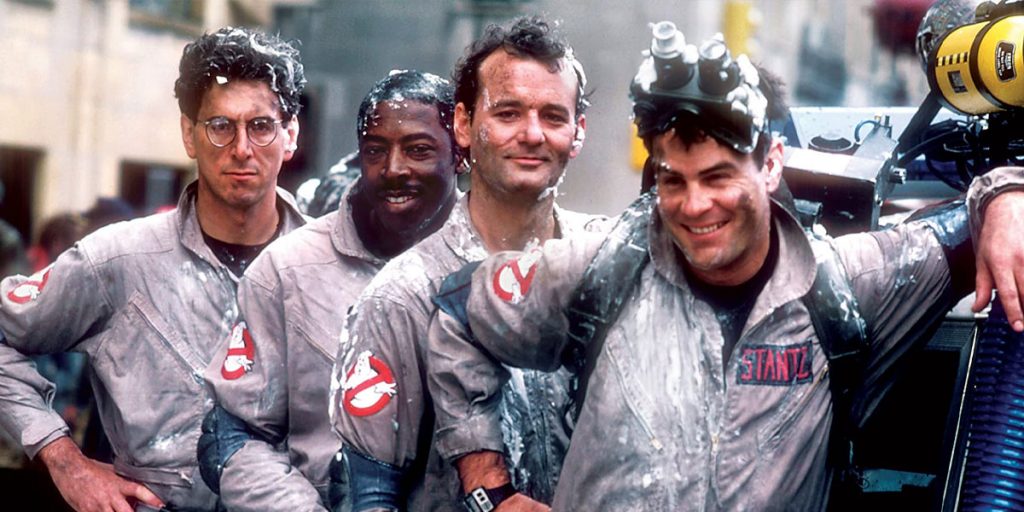
So, has all my credibility gone right out the window yet?
In all fairness, I can see why almost no one seems to prefer the Ghostbusters reboot over the original classic, especially considering how beloved the original is to begin with. I don’t believe either film to be anything that remarkable, as they both have a good deal of strengths and weaknesses. The original is more mature, risky, and innovative, but has unlikeable and/or forgettable leads, underwhelming energy, and little soul. The reboot has stronger characters, more laughs, and a more heartfelt story, but is more childish and takes far fewer chances. Yet for all the highs and lows of these two films, I still have a clear favorite among them: the safer yet more emotionally engaging reboot. I can only hope to have properly explained myself and helped anyone reading at least understand an opinion that, to be frank, I often feel like I’m not allowed to have.
It’s clear that Ghostbusters as a franchise is still very much alive and relevant, and that many still have very strong feelings on it. If this whole comparison is any indication, there are a lot of different, possibly unexpected viewpoints from a lot of different kinds of Ghostbusters fans, die-hard and casual alike, that are worth listening to and sharing. And with Ghostbusters: Afterlife now in theaters, there are bound to be even more fresh, new discussions and differing opinions surrounding the franchise born from its latest installment. As long as the conversation is civil, fun, and enlightening, I can safely say that I look forward to being a part of it.

